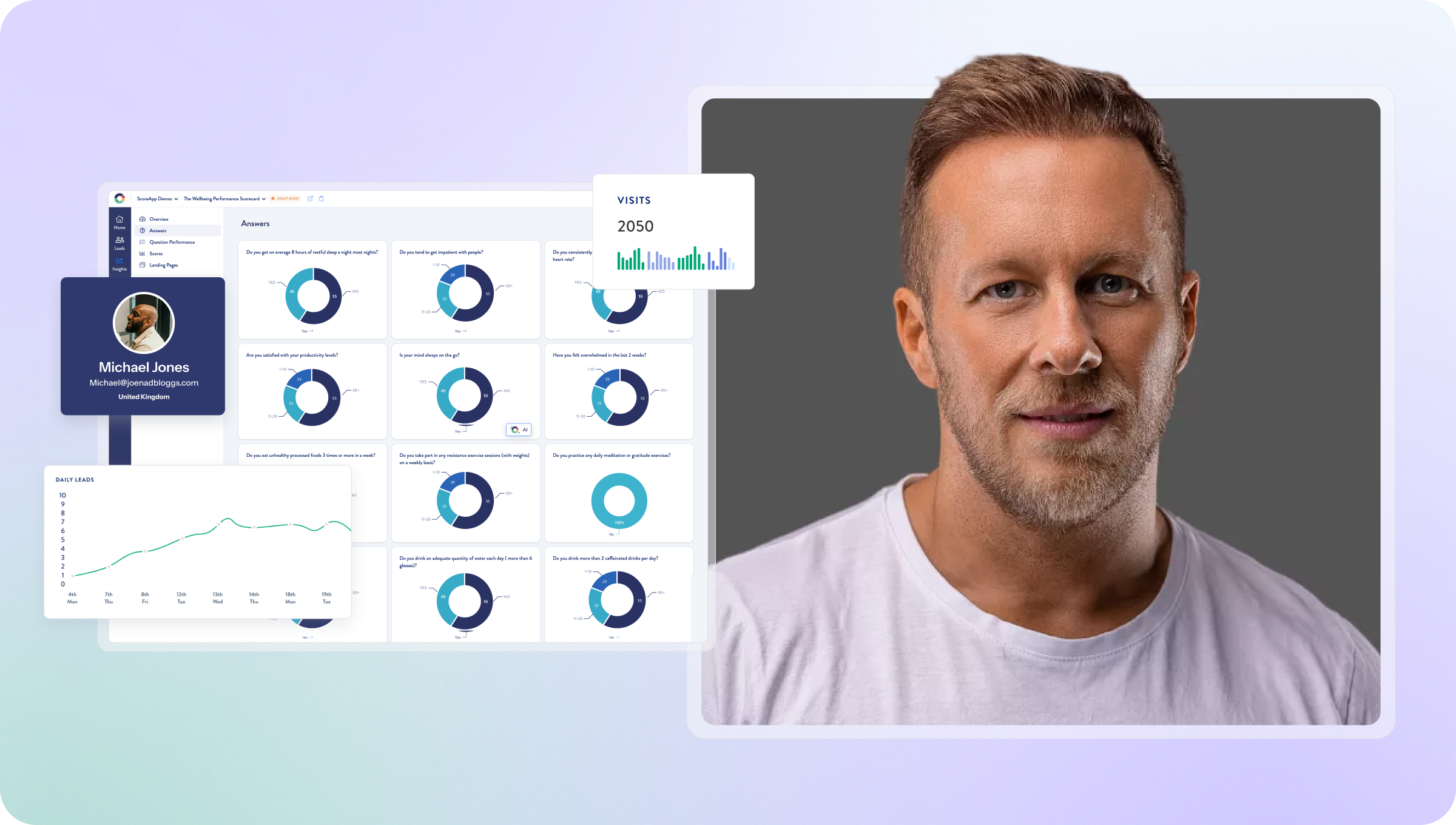5 proven post-quiz email flows (with templates you can steal)


You’ve launched your ScoreApp Quiz, you’re proud of all your new leads, and you’re ready to dive into all that juicy data. But don’t treat this as the finish line. The real work (and reward) begins in what you send next.
Post-Quiz email flows matter. They’re the system that turns answers into relationships, and relationships into revenue. But, we’ve got good news – you don’t have to do this all by yourself. In this guide, you’ll discover five proven post-Quiz email flows – complete with templates you can copy, adapt, and plug straight into your funnel.
Let’s take a look.
1. The Welcome Flow

The moment someone completes your Quiz is when they’re hottest. They’ve just interacted with you, they’re curious about their results, and they’re primed for a next step. This is the exact moment to build momentum, not let it slip.
A ‘Welcome Flow’ does three important things:
- It confirms their result (and makes them feel seen).
- It delivers quick value based on what they’ve told you.
- It invites a small (but important) action to deepen your relationship.
Template (3 emails you can swipe)
Now for the good bit… Here are three basic email templates you can adapt to your brand’s tone and style:
Email 1: Your results are in
- Subject: “Here’s your [Result Type] breakdown”
- Body: Thank them, recap their result in your own wording, and give them a quick win, based on their answers.
- CTA: Send them to a bonus resource, a quick video, or a shareable link – something low-friction that keeps the conversation alive
Email 2: Here’s what it means for you
- Subject: “3 tips tailored to your [Result Type]”
- Body: Share a handful of personalized tips, resources, or stories that will deepen the value of their result.
- CTA: Link to a blog, video, or community group.
Email 3: Your next step
Subject: “Ready to level up?”
Body: Position yourself as a trusted guide. Show them where to go next, whether it’s joining your group, claiming a freebie, or booking a call.
CTA: Provide the next step with a clear instruction.
Example in action
A personal finance expert has run a Quiz called “What’s your money mindset?”. They’re set to receive useful insights into their audience and (for example) whether they’re savers or spenders.
Using the templates in this section, the expert sends personalized email sequences for:
- Savers: with results with investing tips.
- Spenders: with advice on how to manage their money.
They use the same flow, but each sequence is customized to feel personal – and it’s what builds true connection.
2. The Nurture Flow
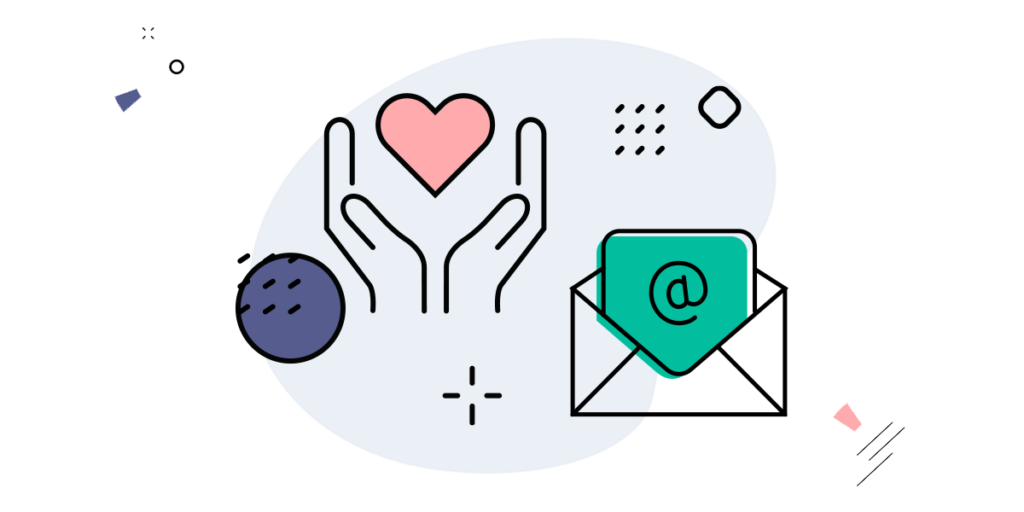
Once the initial excitement over your Quiz fades, you need to keep your prospects warm. A ‘Nurture Flow’ will educate, entertain, and prove you’re the expert they should stick with.
It does three jobs too:
- It deepens trust with useful insights.
- It keeps your brand first and foremost in people’s minds.
- It moves your leads closer to buying readiness.
Template (3–4 emails you can swipe)
Here are 4 email templates you can adapt – or simply use as inspiration:
Email 1: The myth buster
- Subject: “The biggest mistake [Result Type]s make”
- Body: Help your prospects and reinforce your authority by busting a common myth connected to their Quiz result.
- CTA: Direct them to read or watch a deeper resource.
Email 2: Give them some quick wins
- Subject: “3 easy wins for [Result Type]s this week”
- Body: Share some practical, bite-sized tips that match their challenges.
- CTA: Ask them to try one tip this week and reply with how it went (or share on social with a hashtag).
Email 3: A story/case study
- Subject: “How [someone like them] made progress”
- Body: Share and describe a relatable transformation story.
- CTA: Invite them to imagine their own journey.
Email 4: Community invite
- Subject: “Want support from others like you?”
- Body: Invite them into your group, forum, or social space.
- CTA: Provide the link for them to join you.
Example in action
A fitness coach runs a Quiz asking participants “What’s your workout style?”. This is useful for the quiz respondents so they get the most from their time exercising, and invaluable for the coach, so they can send the right offers to the right people.
They adapt this email sequence to send personalized messages to:
- Time-poor professionals: emails full of 10-minute workouts.
- Motivated beginners: emails myth-busting fad diets and containing easy starter routines.
Instead of a one-size-fits-all newsletter, each new lead gets content that feels tailor-made – and it keeps them opening, clicking, and trusting the coach.
3. The Sales Flow
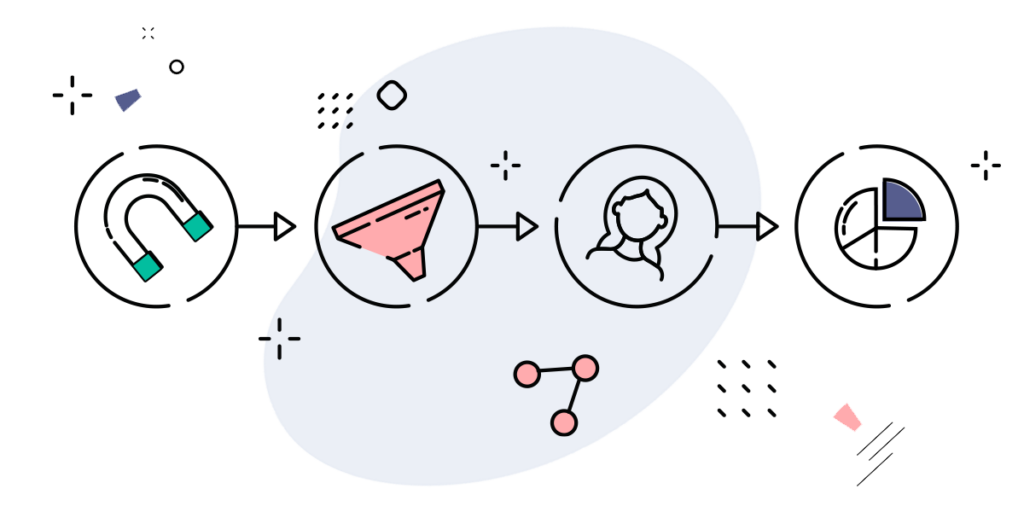
This is where things get serious. You’ve built trust, and now it’s time to invite people to buy. A Sales Flow email sequence will use their Quiz data to frame your offer as the natural next step.
Here’s the breakdown of its purpose:
- It presents the right offer at the right time.
- It builds urgency and your credibility.
- It converts warm leads into paying customers.
Template (4–5 emails you can swipe)
Let’s take a look at how these crucial emails should be structured and the kind of information you need to include to get sales flowing in.
Email 1: Introduce the offer
- Subject: “Your next step after [Result]”
- Body: Make sure you connect their results directly to your product or service.
- CTA: Invite them to learn more about your service or offer.
Email 2: Create a value stack
- Subject: “Here’s everything you’ll get when you join”
- Body: Break down the benefits, bonuses, and outcomes they’ll get by buying from you.
- CTA: Invite them to buy from you or join your program.
Email 3: Provide social proof
- Subject: “See how others like you succeeded”
- Body: Share a testimonial or case study.
- CTA: Invite people to try for themselves now.
Email 4: Handle objections
- Subject: “What if you’re worried about [Objection]?”
- Body: Tackle people’s top concerns head-on with reassurance or proof.
- CTA: Invite them to move forward with confidence.
Email 5: Last chance
- Subject: “Doors close tonight”
- Body: Use urgency carefully but clearly – highlight a discount ending, limited spots, or a firm deadline.
- CTA: Add a clear, bold purchase link.
Example in action
A business expert/course creator has run a Quiz called “What’s your business growth stage?”. They now have all the information they need about their target audience. It’s gold, but now they need to close sales. They adapt these templates to sell to:
- Beginners: with a slower, nurturing sales flow pointing to a starter course.
- Advanced users: with a shorter, high-energy flow selling a masterclass.
With ScoreApp scoring and integration, beginners automatically receive a slower nurture-driven sequence, while advanced users get a punchier high-ticket pitch. The right message goes to the right lead, without extra work.
4. The Objection-Handling Flow
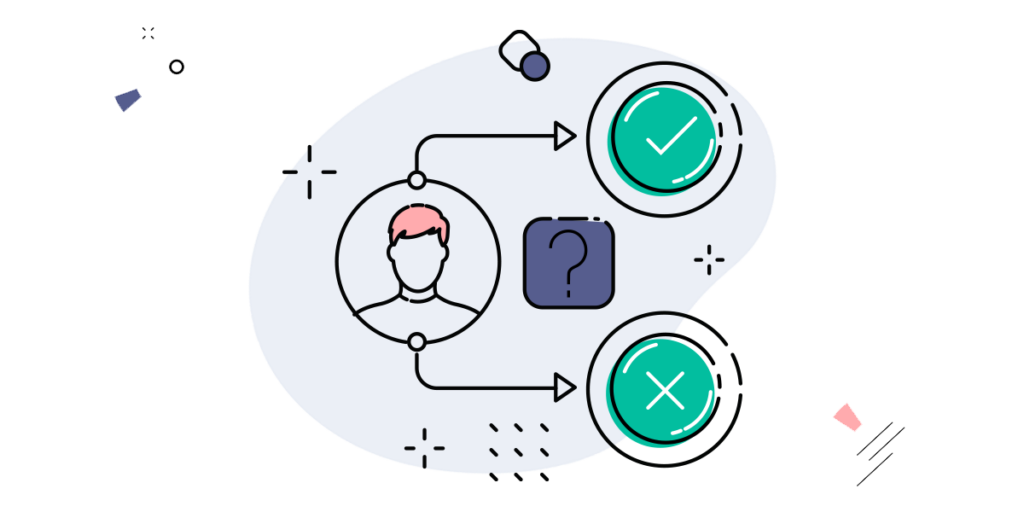
Sometimes people are interested in what you have to offer, but they need reassurance. An ‘Objection-Handling’ flow uses the information you’ve gathered from your Quiz to anticipate their worries and addresses them before they drift away.
Here’s what it does:
- It addresses the most common objections.
- It responds with empathy and authority.
- It removes friction so they feel confident.
Template (2–3 emails you can swipe)
Email 1: Objection spotlight
- Subject: “Worried about [Objection]?”
- Body: Empathise, then provide each segment with a solution or example.
- CTA: Invite people to book a call or direct them to a resource on your website.
Email 2: FAQ style
Subject: “Your top questions, answered”
Body: List and answer common hesitations.
CTA: Send them to a blog post or video where you bust that objection in detail.
Email 3: Proof and credibility
- Subject: “Why you can trust this works”
- Body: Share testimonials, press mentions, or other social proof of your credentials.
- CTA: Point them to a success story, client page, or detailed case study that builds trust.
Example in action
A podcaster who also offers coaching has run a Quiz. A large section of respondents have said that their main concern is “I don’t have time.” They adapt this email sequence to suit them in the following way:
- They include a case study: “How clients got results in 10 minutes a day.”
- They provide social proof: including screenshots/images of client wins.
That reassurance tips fence-sitters into buyers – turning hesitation into confidence, and confidence into sales.
5. The Re-Engagement Flow
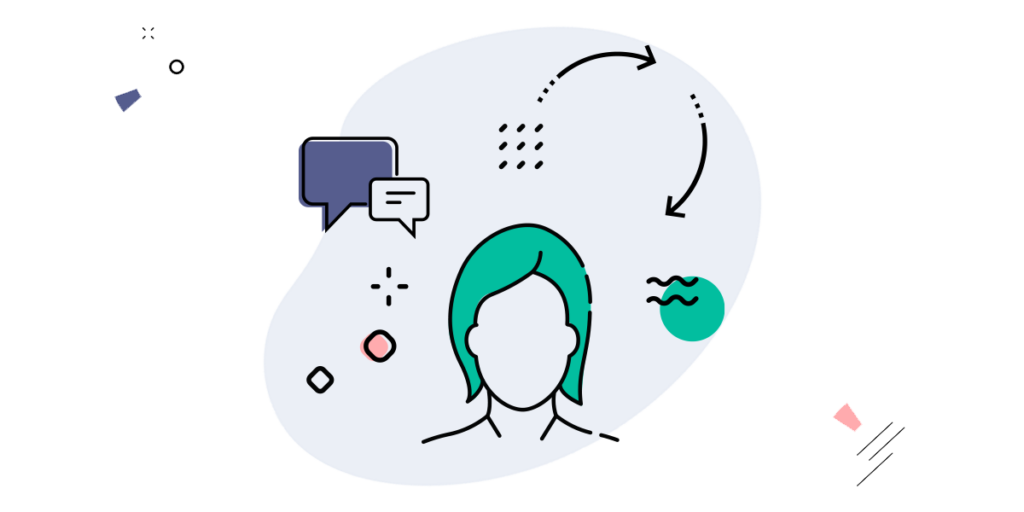
Not every lead is ready now. Some will drift off and ghost you – it’s normal – but a ‘Re-Engagement’ flow will give them a reason to come back before you write them off.
Here’s how it works:
- It wakes up cold leads.
- It offers something new and interesting.
- It cleans up your list if they’re truly done.
Template (2–3 emails you can swipe)
Here’s a structure for you to follow and make this work for you:
Email 1: A fun re-entry point
- Subject: “Still curious? Take this new Quiz”
- Body: Keep your wording light, inviting, with no pressure.
- CTA: Invite them to retake a fresh Quiz, or click to see updated results.
Email 2: Share something fresh
- Subject: “What’s new since you last checked in”
- Body: Offer drifters a new resource, update, or exclusive insight.
- CTA: Send them to a new video, blog, or mini-guide they haven’t seen before.
Email 3: Determine whether they stay or go
- Subject: “Do you still want to hear from me?”
- Body: Keep it respectful and light. Remind them they can rejoin anytime – the door is always open.
- CTA: Give them two clear options: one-click to stay, one-click to unsubscribe: “Yes, keep me on the list” vs. “No thanks, I’ll step away for now.
Example in action
A travel vlogger sees a segment of dormant leads in his ScoreApp dashboard and runs a re-engagement Quiz: “What’s your next dream trip?” Cold subscribers suddenly light up again.
Re-engagement flows don’t just wake up subscribers, they recycle dormant leads back into your nurture or sales system, which means nothing is wasted.
Do I really need this many emails?
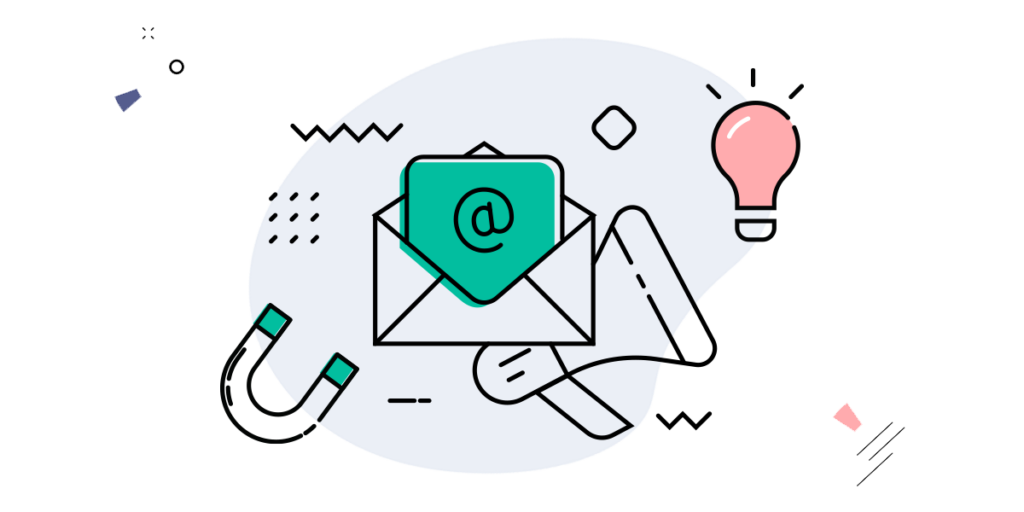
If you’re new to building email flows, now you might be thinking “this feels like a LOT of emails to send after one Quiz.” That’s totally fair. But, the key thing to understand is that these flows don’t all happen at once, and not every lead will see every email.
Here’s how it usually plays out:
- The Welcome Flow (short and snappy, 2–3 emails) happens right away while someone’s still excited.
- The Nurture Flow slows things down. Think once a week, or once every couple of weeks, so you stay top of mind without being annoying.
- The Sales Flow only triggers when someone looks ready to buy. If they’re not there yet, they just keep getting nurtured.
- Objection-Handling and Re-Engagement are safety nets. They’re not for everyone – only for the people who stall or drift away.
So, while we’ve given you 5 different flows, in reality your subscribers should only move through the ones that make sense for their journey.
A Quiz actually gives you permission to personalize. When your emails feel relevant and useful, people won’t complain that there are too many – they’ll be glad you showed up in their inbox.
Build a system, not just a Quiz
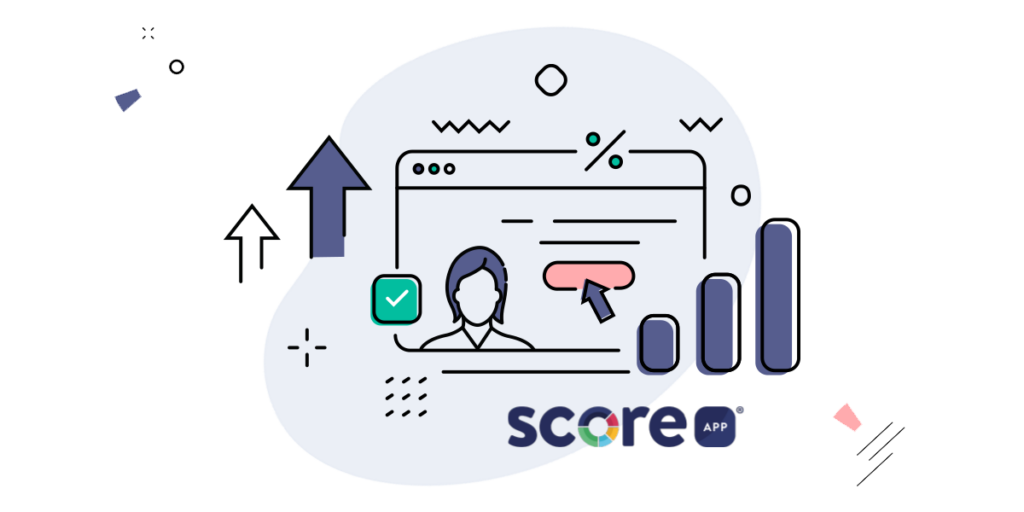
A Quiz is the spark, but email flows are where your sales come from. With ScoreApp’s automatic segmentation, clear dashboard, and seamless CRM integration, personalised marketing becomes effortless.
These five flows will make it easy for you to give all the great data you’ve received a job, turning casual quiz-takers into loyal subscribers, warm leads, and – best of all – paying customers.
You don’t need to reinvent the wheel. These templates are ready for you to swipe, customize, and drop straight into your own ScoreApp funnel.Ready to stop leaving leads on the table? Try ScoreApp FREE and put these 5 flows to work today. Your next customers are already in your list – make sure they hear from you.

